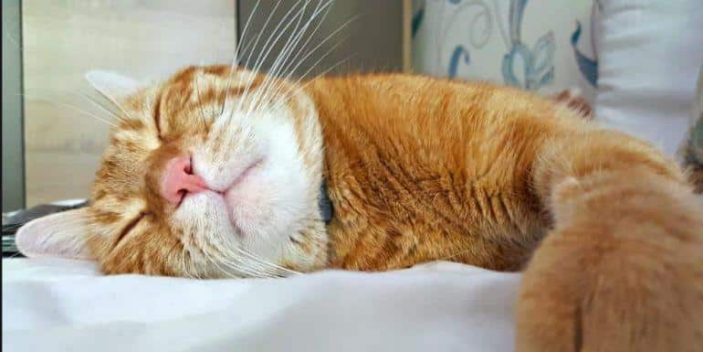Cats are said to suffer from hyperkalemia when they have abnormally high potassium levels in their blood, i.e., beyond the normal range of 3.5 to 5.5 mEq/L. It is the exact opposite of hypokalemia.
Although most of the potassium ions (K+) are contained in cells, there is some amount found in the extracellular fluids and a balance between these two is very essential in ensuring that this mineral performs its various functions including muscle and nerve functions.
Finally, the blood concentration of potassium in cats is closely regulated by the kidney which excretes excess when the level goes higher and vice versa.
Causes
In healthy cats with normal renal function, chances of feline hyperkalemia are minimal as the kidney will be able to effectively regulate K+ concentration.

Even in some cases of chronic kidney failure unless oliguric (reduced urine output) or anuric (faulty urine excretion) renal failure occurs, these animals may not end up with hyperkalemia because of what the DVM360 notes, “potassium excretion is maintained by enhanced tubular secretion in remnant nephrons.”
Oliguria and anuria are common in acute kidney failure but can occur in chronic kidney failure too. Additionally, kidney failure, both acute and chronic both a higher prevalence in older cats, predisposing older cats to hyperkalemia.
Therefore, hyperkalemia is primarily caused by an impaired urinary excretion of K+. However, the following factors can cause or contribute to this condition:
- Urinary tract problems including rapture from trauma, obstructed urethra, UTIs, etc. Blockages are often more noted in male cats.
- Intake of high potassium cat foods including oral or IV potassium supplements.
- Iatrogenic hyperkalemia due to errors in calculating the right amount of potassium to be used in IV infusion with concurrent supplementation of this mineral.
- Any condition that results in low body pH (acidosis) including diabetic ketoacidosis, starvation, shock, etc.
- Transcellular shifts of K+ from intracellular fluids to extracellular fluid due to exercise, tissue necrosis, insulin deficiency and hypertonicity in diabetic cats, among other causes.
- Leukemia and thrombocytosis (increased platelet count)
- Trauma such as being hit or falling can cause fluid to leak into the abdomen and hence toxins buildup. Tissue damage can also be a cause since cells have high K+
- Addison’s disease due to damaged adrenal glands and their body does not produce enough cortisol and aldosterone vital for excretion of this electrolyte.
- An ischemia-reperfusion injury where blood flow is blocked and toxins may accumulate. When the blockage is released, there might be transient hyperkalemia.
- Red blood cell hemolysis -It is another possible cause of high serum levels of this mineral. However, most cats even dogs have low amounts of potassium in these cells except neonates or dog breeds such as English springer spaniels or Akita, notes an article on Electric and Acid-Base Disorders published in Small Animal Clinical Diagnosis by Laboratory Methods.
- Antifreeze poisoning, the use of antibiotics such as amikacin and gentamycin, digoxin or ACE inhibitors such as enalapril[1] as well as ARBs (Angiotensin II Receptor Antagonists) like telmisartan.
Symptoms of high potassium in cats
Symptoms noted will depend on how high potassium level in cat’s blood is with mild symptoms when levels are not way far beyond the upper limit of 5.5 mEq/L (mmol/L).
Mild cases will be when K < 6,5 mEq/L and above these levels, it will be severe. Some of the clinical signs often noted include:
- Muscle weakness and flaccid paralysis
- Lethargy
- Abnormal heartbeat rate (cardiac arrhythmia)
- Depression
- GI disturbances or complaints
- Collapse
Besides these symptoms, depending on the underlying cause, your cat may also show symptoms of the underlying cause of kidney failure, diabetes, urinary blockage, bladder rapture, ketoacidosis or Addison’s disease.
Diagnosis
Your vet will want to know your cat’s history including onset and progression of symptoms and possibly triggering incidences to help him make a guess on the possible cause.
Afterward, he or she may perform the following tests:
- Biochemical blood profile – Where high creatine and bun will indicate renal disease while high blood glucose will show ketoacidosis or diabetes.
- Complete blood count – chronic kidney disease may be suspected in the case of low red blood cells.
- Urinalysis – check for infections, urinary crystals or presence of blood in the urine.
- Ultrasound and X-rays – detect rapture
- ECG or electrocardiogram – to detect any abnormal cardiac electrical conduction.
Cases of a cat straining while urinating or has little urine could be a pointer to kidney failure accompanied by oliguria or anuria, urinary tract blockage or infections.
Note that it is normal for serum potassium to be higher than plasma since, during clotting, platelets release some potassium and hence there are chances of pseudohyperkalemia.
Treatment and recovery
Treatment will focus on supportive care to help restore normal potassium levels in cats such as using a saline solution (0.9%) and reducing various symptoms. Fluid therapy (without this K+ cation) will also be necessary in case of hypotension or dehydration.
The use of calcium gluconate will antagonize the effects that potassium has on the cell membrane while glucose or sodium bicarbonate will make extracellular sodium into cells.
Furthermore, your vet may consider dialysis or a cation resin to help get rid of the excess of this electrolyte in this pet’s body.
Afterward, your vet will treat any underlying disease or condition causing hyperkalemia including prescribing the right as well as recovery monitoring.
Any potassium raising or containing drugs or supplements should be discontinued where possible. Also, go for low potassium cat food.
If your cat has chronic kidney disease, be careful with his or her diet since an abrupt potassium load may take up to 3 days to stabilize.
Finally, there will be a need for follow-up checks to see if the K+ level has returned to normal while watching for the possibilities that may result from the various treatments.
